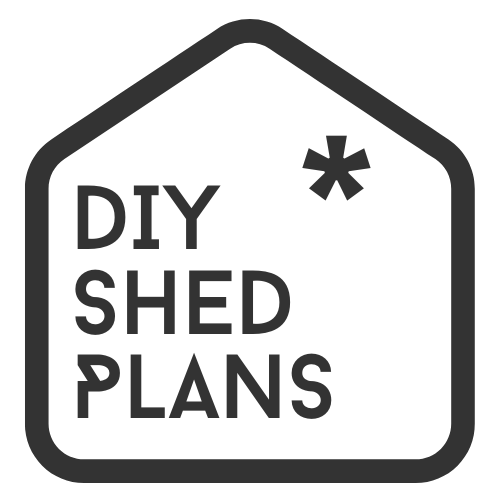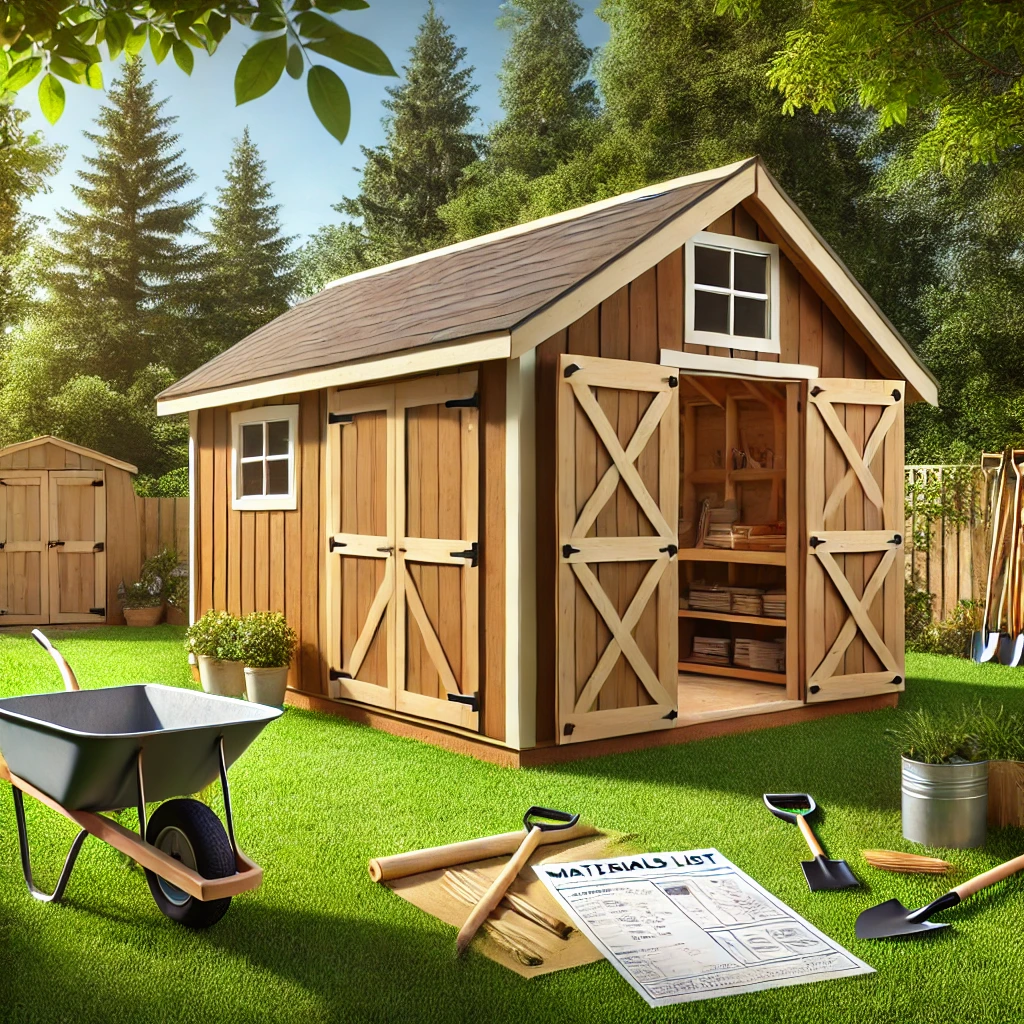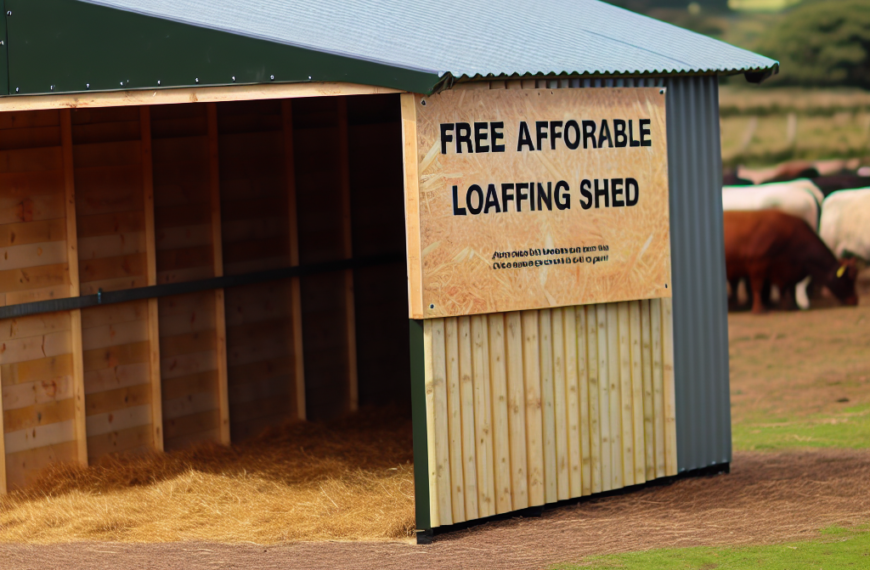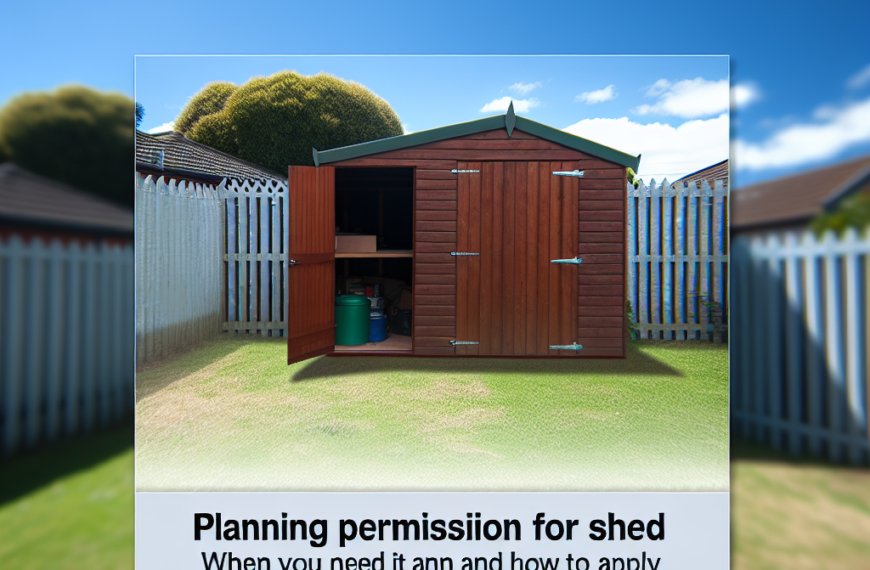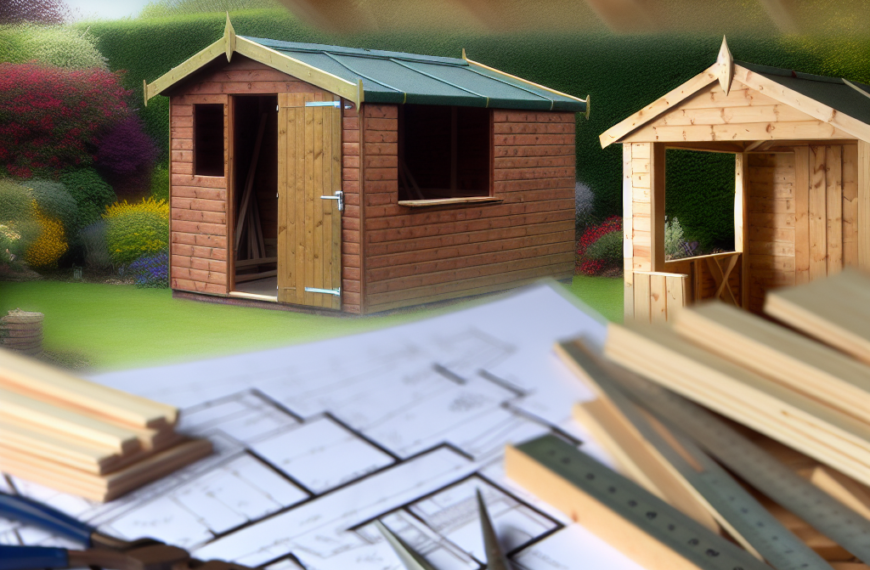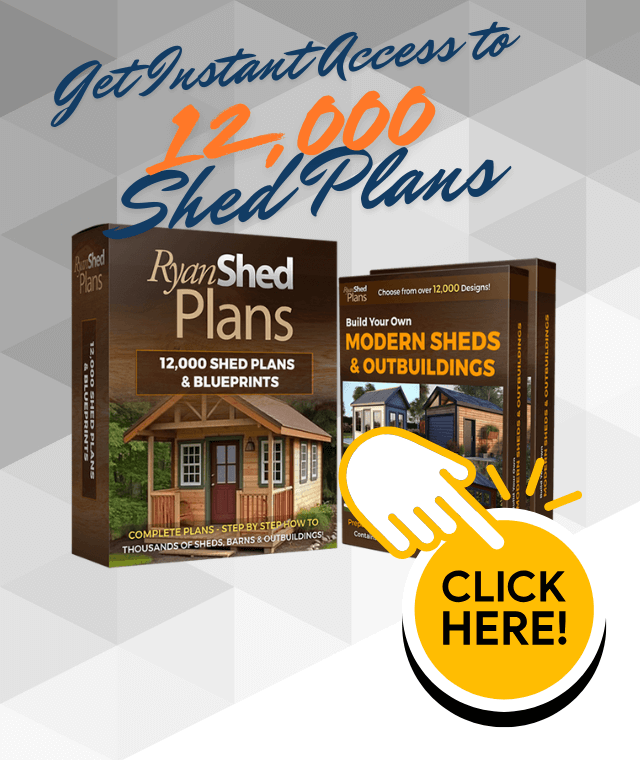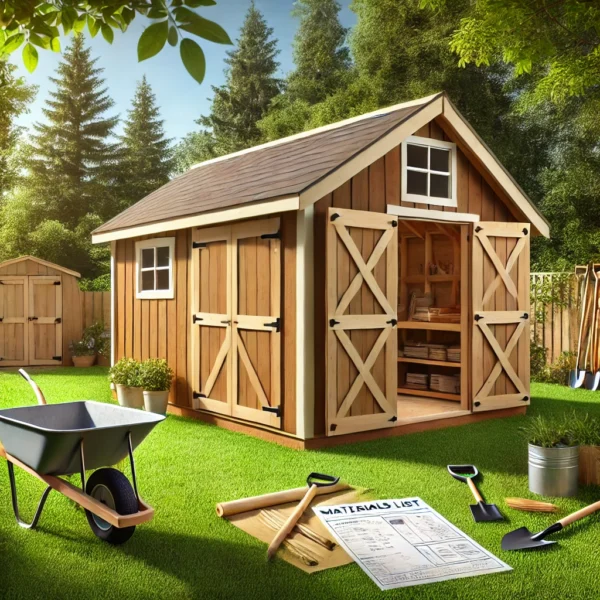
Building your own shed is an exciting and cost-effective way to add valuable storage space or a functional workspace to your property. Whether you’re a seasoned DIY enthusiast or a beginner, having access to free shed plans with material lists can make the process straightforward and enjoyable. With the right guidance, you can create a shed that not only meets your needs but also enhances your backyard’s aesthetics.
This guide delves into everything you need to know about DIY shed plans, from selecting the right size and materials to following step-by-step instructions. We’ll also explore options like free 8×12 shed plans PDF and 12×24 shed plans with material lists to help you choose a design that suits your needs.
Understanding Shed Types and Their Uses
Sheds come in a variety of styles, each designed to meet specific needs. Here are some popular types to consider:
1. Gable Sheds
This classic shed style features a pitched roof that slopes on two sides, providing ample storage space. It’s a versatile option suitable for tools, garden supplies, or small equipment.
2. Lean-To Sheds
Perfect for smaller yards, lean-to sheds are compact and designed to attach to an existing structure. They’re ideal for storing items like bicycles, lawnmowers, and firewood.
3. Barn-Style Sheds
Known for their spacious interiors, barn-style sheds are excellent for storing large equipment, livestock, or even converting into a workshop.
4. Modern Sheds
With clean lines and sleek designs, modern sheds add a contemporary touch to your property. These are perfect for use as home offices or artist studios.
5. Custom Sheds
If you have unique storage needs, custom sheds offer endless possibilities. Add shelves, windows, or even a loft to create a space tailored to your requirements.
When selecting a shed type, consider its primary purpose, available space, and how well it blends with your home’s exterior.
Key Factors to Consider When Choosing DIY Shed Plans
Before starting your project, it’s essential to evaluate several factors to ensure success:
1. Budget
One of the biggest advantages of DIY shed plans free is their ability to minimize costs. Free plans with material lists can save you hundreds of dollars by helping you plan and shop efficiently.
2. Available Space
Measure your backyard to determine how much space you can allocate for the shed. Consider both the shed’s footprint and the space needed for doors and windows to open fully.
3. Material Selection
Choose durable and weather-resistant materials to ensure your shed lasts for years. Treated wood, metal, and composite materials are popular choices.
4. Skill Level
If you’re a beginner, opt for simpler designs that come with detailed instructions. More complex projects, like a 12×24 shed plan with a material list, may require intermediate carpentry skills.
5. Local Regulations
Check local building codes and permits required for constructing sheds, especially for larger designs like the 12×24.
Benefits of Free Shed Plans with Material Lists
Free shed plans with material lists are invaluable resources for DIYers. They:
- Save Time: Clear instructions and pre-prepared material lists help streamline the building process.
- Eliminate Guesswork: By specifying exact quantities and sizes, these plans reduce the risk of buying the wrong materials.
- Reduce Costs: Avoid unnecessary expenses by purchasing only what you need.
- Provide Clarity: Visual diagrams and step-by-step guides ensure you stay on track throughout the project.
Many free plans are available in PDF format, making them portable and easy to print.
Step-by-Step Guide to Building a DIY Shed
Follow these steps to construct your shed efficiently:
Step 1: Plan and Design
- Choose a shed plan that meets your needs.
- Use free resources like free 8×12 shed plans PDF for compact sheds or 12×24 shed plans with material lists for larger projects.
- Sketch out additional features, like shelving or windows, if needed.
Step 2: Prepare the Site
- Clear and level the ground where the shed will be built.
- Lay a gravel base or concrete slab to ensure stability.
Step 3: Gather Materials and Tools
- Refer to the material list in your shed plan. Common items include treated wood, nails, screws, roofing shingles, and paint.
- Essential tools include a circular saw, hammer, drill, measuring tape, and spirit level.
Step 4: Construct the Foundation
- Build a sturdy frame using treated wood or concrete blocks.
- Ensure the foundation is square and level.
Step 5: Frame the Walls
- Assemble wall frames on the ground, then lift them into place.
- Secure the walls to the foundation and each other.
Step 6: Install the Roof
- Follow the plan’s instructions to construct and attach the roof trusses.
- Install roofing material, ensuring proper alignment and waterproofing.
Step 7: Add Finishing Touches
- Install doors, windows, and vents as specified in the plan.
- Paint or stain the shed to match your home or garden.
Exploring Free 8×12 Shed Plans PDF
An 8×12 shed is ideal for homeowners needing moderate storage space without taking up too much yard area. Free PDF plans typically include:
- Detailed blueprints for framing, walls, and roofing.
- Material lists with quantities and measurements.
- Easy-to-follow step-by-step instructions.
These plans are perfect for beginners and can often be completed in a weekend.
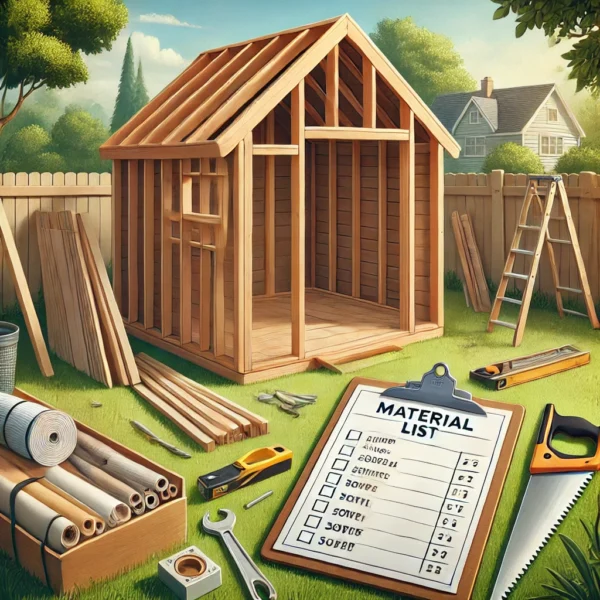
Features of 12×24 Shed Plans with Material Lists
A 12×24 shed provides substantial storage and workspace, making it a popular choice for larger properties. Key features of these plans include:
- Spacious Interiors: Perfect for storing equipment, tools, or vehicles.
- Customizable Layouts: Add workbenches, shelving, or lofts to maximize functionality.
- Comprehensive Material Lists: Ensure you have everything needed before starting.
These sheds often require more advanced carpentry skills but offer unmatched versatility and durability.
Customizing Your Shed
One of the joys of building your own shed is the ability to customize it. Here are a few ideas:
- Install Shelves: Optimize storage by using vertical space.
- Add Windows: Improve natural lighting and ventilation.
- Include a Loft: Utilize overhead space for seasonal or rarely used items.
- Choose Unique Paint Colors: Make your shed a standout feature in your yard.
Common Mistakes to Avoid
Avoiding common pitfalls can save you time and frustration:
- Incorrect Measurements: Always measure twice before cutting.
- Skipping the Foundation: A weak foundation can compromise the entire structure.
- Using Low-Quality Materials: Invest in treated wood and durable roofing for longevity.
- Ignoring Permits: Ensure you comply with local building codes.
Maintenance Tips for Your Shed
To keep your shed in top condition:
- Inspect Regularly: Check for signs of wear, such as loose shingles or rotting wood.
- Paint or Stain Annually: Protect the shed from weather damage.
- Clean Gutters: Remove debris to prevent water damage.
- Lubricate Hinges: Keep doors and windows operating smoothly.
FAQs About DIY Shed Plans
1. Are free shed plans reliable?
Yes, many free plans are created by professionals and include detailed diagrams and instructions.
2. What size shed should I choose?
Smaller sheds like an 8×12 are great for gardening tools, while larger options like a 12×24 are ideal for equipment or workshops.
3. How much does it cost to build a shed?
Costs vary but can range from $500 for smaller sheds to $5,000 for larger, customized designs.
4. Where can I find free plans?
Search online for terms like DIY shed plans free, or visit home improvement websites offering downloadable PDFs.
5. Can I build a shed without experience?
Yes! Free plans with material lists and step-by-step guides are beginner-friendly.
6. What permits do I need?
Check your local zoning regulations, as larger sheds may require permits.
Conclusion
Building a DIY shed is a rewarding project that offers both utility and creativity. By using free shed plans with material lists, you can save time, reduce costs, and ensure a successful build. Whether you choose a compact 8×12 shed or a spacious 12×24 shed, the key is careful planning and attention to detail. With the right resources, you’ll have a durable, attractive shed that serves your needs for years to come.
